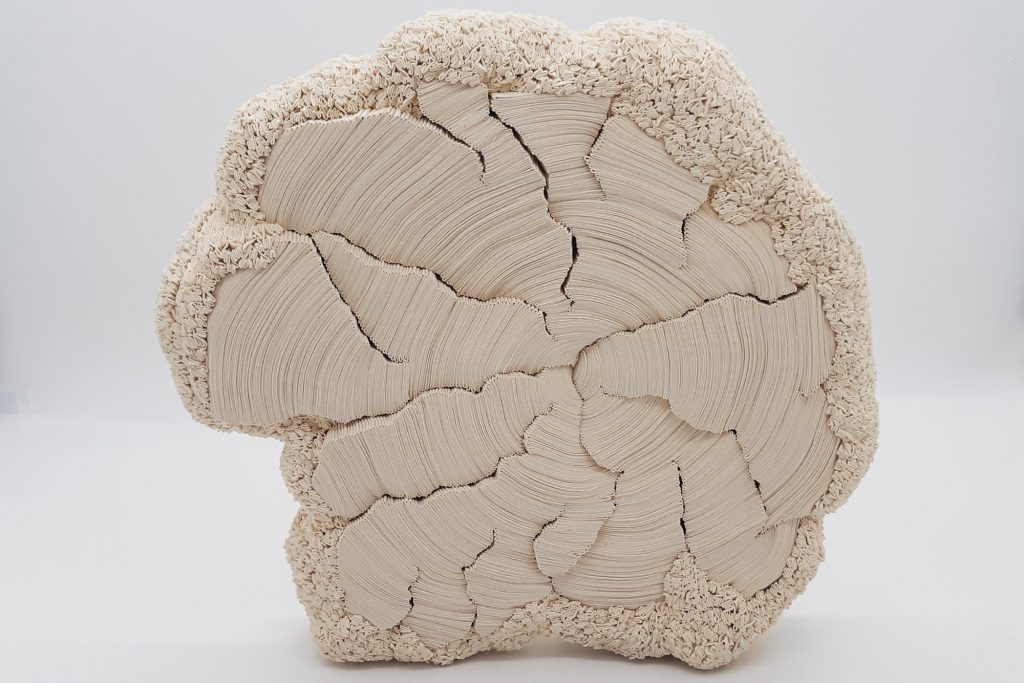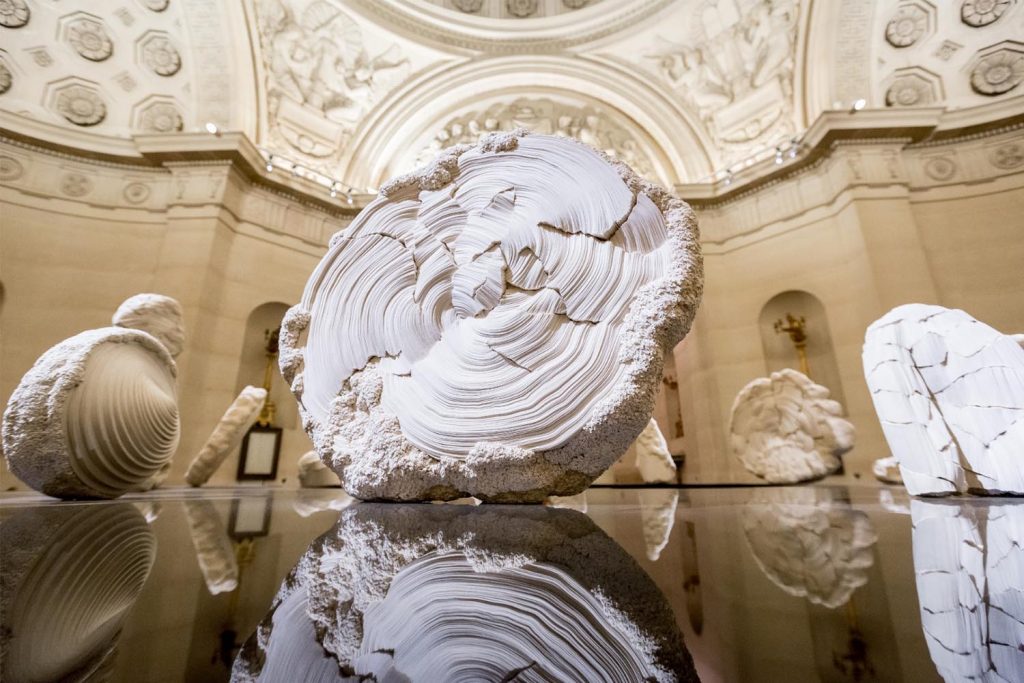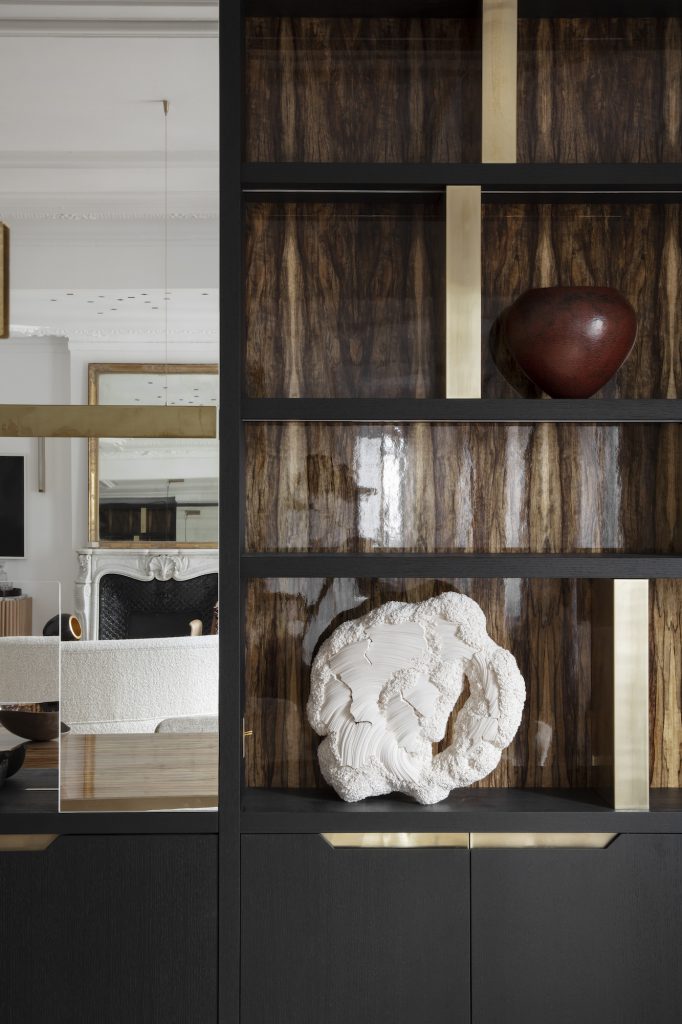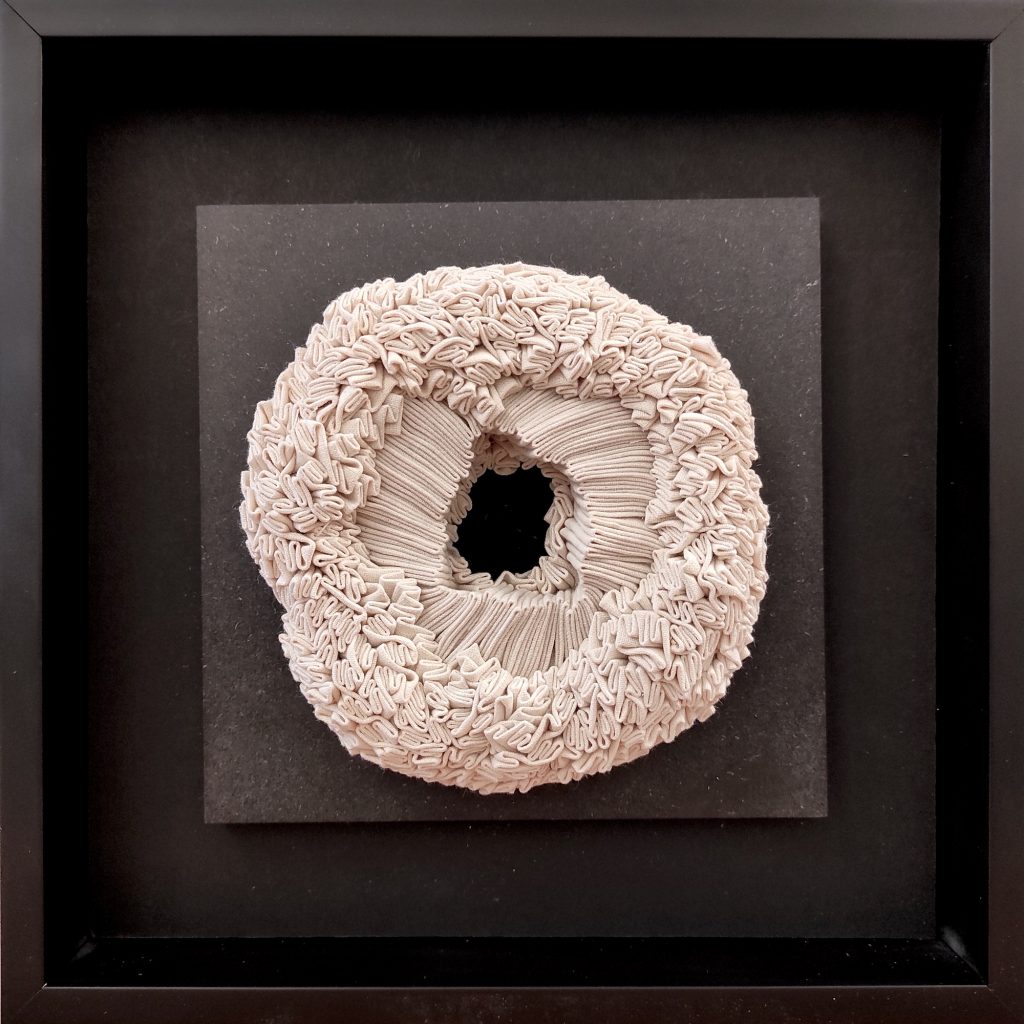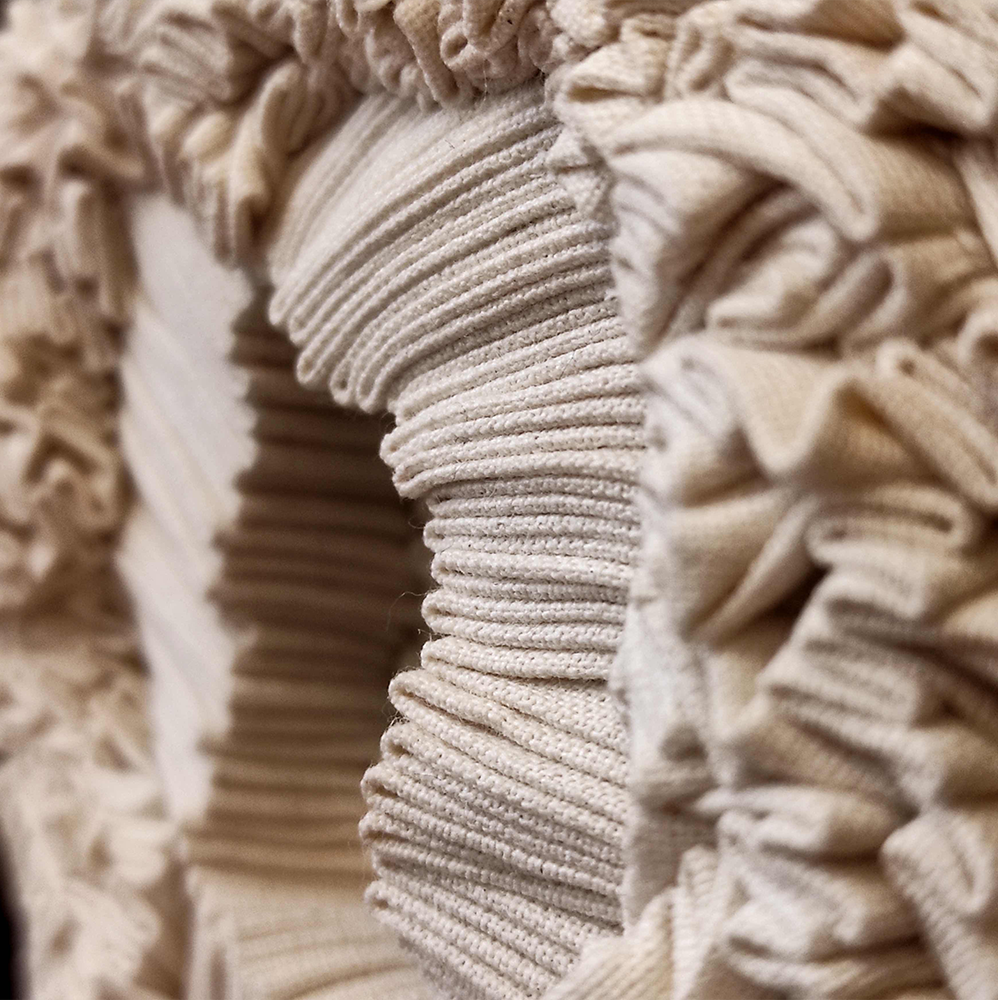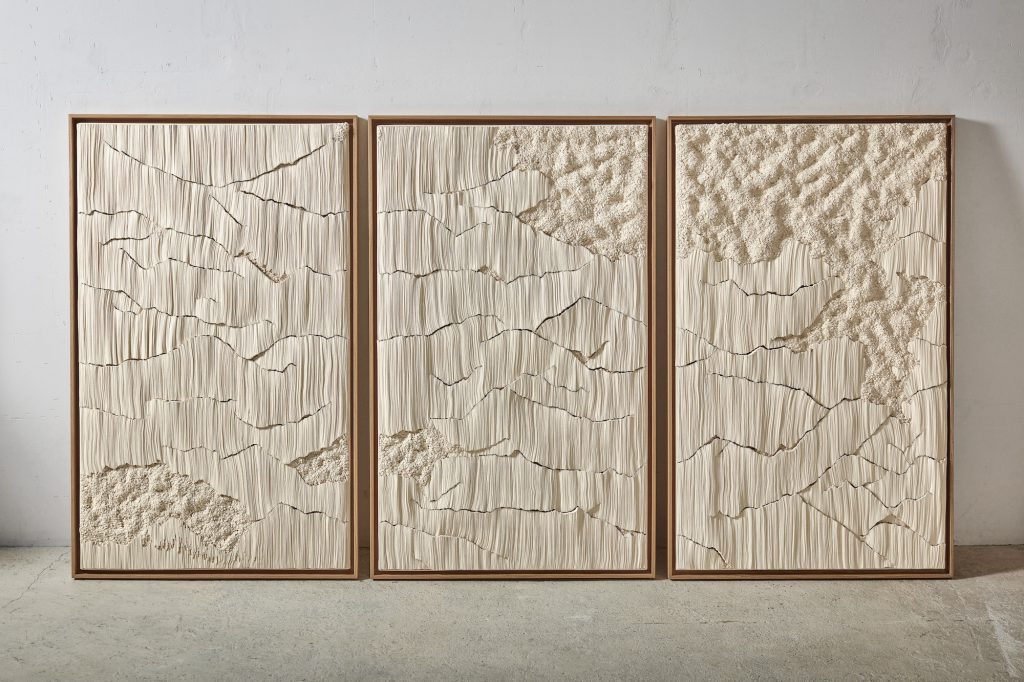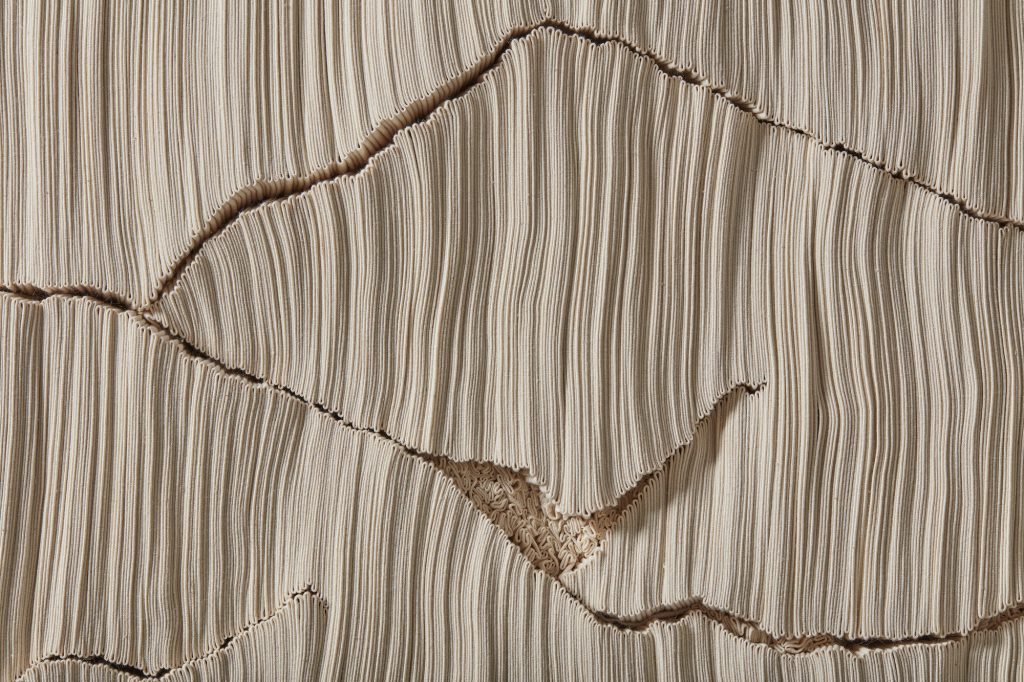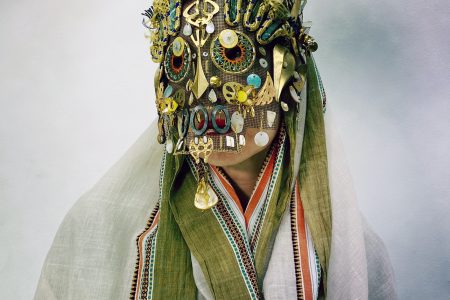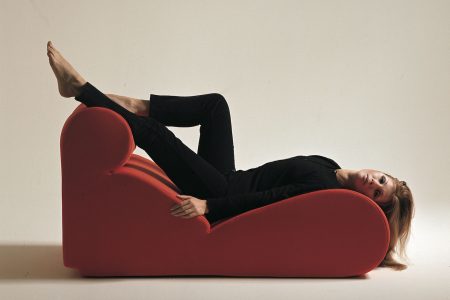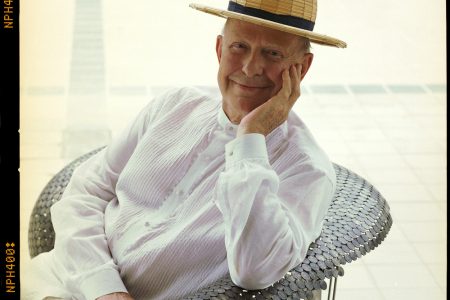
Simone Pheulpin – Between the Folds
TLmag interviewed Simone Pheulpin for its S/S 2021 issue, TLmag35: Tactile/Textile/Texture. The French artist, who received Special Mention from the Loewe Craft Prize in 2018, opens an exhibition of her folded, fabric sculptures at the Musée des arts decoratifs in Paris on December 7th.
From her studio in the French countryside, artist Simone Pheulpin creates stunning sculptures with raw cotton fabric using an intensive process that involves repeated folding and pinning. Her textile works can resemble ancient fossils or unique stones and have a layered, textural quality that is very organic and unexpected.
TLmag: You began working intuitively with your hands using fabric and are a self-taught artist. How did you come to use this off-white muslin fabric and when did you start making sculptural objects with it?
Simone Pheulpin: I had wanted to study at the Beaux-Arts Academy when I was young, but my applications were always rejected. So yes, I am self-taught. I have discovered that I am able to create so many different textures that it never fails to surprise me. I am always discovering new folding techniques which open up new possibilities that I had no idea I was capable of doing. I used to quilt and make quilted art panels in bright, vivid colours, but I was not satisfied with them. I wanted to go deeper. And then one day, I discovered that what I had been looking for was right under my eyes, right under my fingers; I realised that I could use the raw cotton that I stitched my coloured, quilted fabrics on. I knew that I could bring to light this subtle, unseen material and that I could make beautiful things with it.
TLmag: What is it about this fabric that works so well for you? What do you love about it?
S.P.: After I discovered raw cotton as a material that I could use to make art, I knew that it was the right material for me. I love the interplay of light and shade that is created between the folds; I love playing with space and volume, watching how shadows are created in the recesses, and how light refracts on the protrusions. People often ask me if I would use printed or tinted fabrics, and so I show them one of my sculptures and ask them “Do you not think it’s enough as it is?” I could use coloured fabrics – it is a fabric, I can fold it the same way, I can pin it the same way – but I think raw cotton is more than enough; I think it’s the perfect material. I once collaborated with fashion designer Ungaro, creating shoulder pieces that used the same fabric as the dress they were to go with. The result was nice of course, but it was just not the same as my raw cotton. The real challenge was to create perfectly symmetrical shoulder pieces. I struggled with symmetry.
TLmag: When did you feel that there was a shift in your approach to making, that is to say, when you felt that this was something you could take further and do professionally? When did you first exhibit with galleries? Was it in France where you first exhibited?
S.P: The first time I realised that what I was doing was worth something, was valuable, and connected with the art world was in 1987 when I was selected for the Lausanne International Textile Biennial. I did not immediately realize how big a deal it was, it was my first ever application, and I remember thinking “Right, so anybody can get in.” But I soon realised that it was not the case at all. And then, my artwork Décade – the one I created for the Biennial, an installation of 10 panels – won the first prize that year. And that’s when I knew for sure that I could do this professionally. I met Sheila Hicks almost by accident at a time when we were both part of the same group exhibition. I was in awe when she told me that she liked my work and next thing I know, I am meeting with the gallery that represents her in New York. And that’s how my first exhibition came about—which was not in France but in America. I met Florence [Guillier-Bernard, founder and director of French gallery Maison Parisienne], in 2008, and was a part of the gallery’s first exhibition in the Hotel Plaza Athénée, where the very first artwork that she sold was one of my sculptures. She became my agent, and we’ve been working together ever since. She has exhibited my work in the most beautiful places across Europe and has advised me and helped me win awards like the Special Mention from the Loewe Craft Prize in 2018.
TLmag: How does your environment and the landscape where you live influence you as an artist? Are there other places that also inspire you a lot for your work?
S.P.: I feel that my work is very organic. When I am in the Vosges, and I work on my sculptures, I have a direct view of the mountains and that never fails to inspire me. I am always inspired by natural shapes and textures – tree bark, limestone, moss; but anything can inspire me. When I’m in Paris, I can walk in the street, and be inspired by cracks in the pavement, by the texture of the curb…
TLmag: Would you talk about your process as you create your sculptural works? Do you find objects in nature that spark an idea or does it all flow naturally as you get started?
S.P.: Most of the time, I know where I am going. For example, if I want to work on an Eclipse [series], I imagine how the opening will be shaped. If I feel like creating a Croissance, I already know how many cracks and fractures I want and what the ratio between cracks and moss will be. But while I usually know the direction the work is going, it is a very fluid process and things appear that were not planned. The fabric guides me. It can be frustrating, but it also gives rise to beautiful surprises.
TLmag: It must be a very meditative process, through the repetitive nature of folds, as well as with the time? Is this meditative aspect something you are interested in?
S.P.: Yes, for me, it is a meditative process. I start folding cotton, and I can let go of everything, all the worries, the weight, all the little things that are otherwise always there. I start folding and I find peace. I feel that I need it, it is soothing. It is also challenging, because I always want to improve myself, to discover new techniques, to discover that I am capable of more than I thought, even after all these years. There are so many techniques that I discovered along the way, which I never dreamed of back in 1987 when I first started out.
Simone Pheulpin, Plieuse de temps, is on view at the Musée des arts décoratifs, Paris from December 7, 2021-January 16, 2022
spheulpin.free.fr
maisonparisienne.fr
@simonepheulpin
@galeriemaisonparisienne
madparis.fr/Simone-Pheulpin-Plieuse-de-temps
